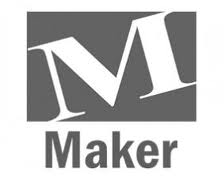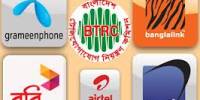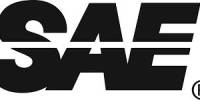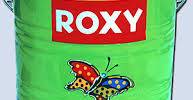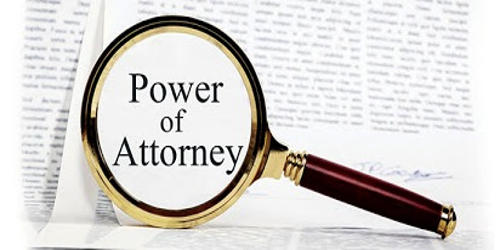Background of the Report:
This internship is a partial requirement of fulfillment of the Master of Business Administration (MBA) degree that provides an on the job experience to students. I was placed at Maker Communications, an event management firm as the assistant Marketing Manger. This job was my very first on the practical job exposure and provided me with learning experience and knowledge in several areas. During the first few weeks of my job, I was able to get accustomed to the working environment of Maker Communications. As the days continued, I not only learned about the activities and operations of correspondents, but also gathered some knowledge about the basic business activities of event management.
This report tries to measure the Clients Satisfaction Level of Maker Communications from the perspective of Bangladeshi clients.
This report covers the entire event related products handle by the “Maker Communications” such as event ideas, services, event stall, consultancy etc.
Objective of the Report:
Broad Objective:
To measure the client satisfaction level of Maker Communications of Bangladeshi clients
Specific Objective:
- To discuss about event management activities in Bangladesh
- To find out the variables that influence customer satisfaction level of an event management firm
- To suggest ways of improving the service standard and satisfaction level of the customers
Methodology of the Report:
Data Source
Both primary and secondary data are used for the research purpose. Primary data is often known as the survey data. It is collected directly to help solve the problem at hand. The secondary data will also help to get more insights into the problem.
- Primary sources:
- Structured/unstructured questionnaires for customer opinions
- Informal discussions with the MC personnel
- Informal discussions with the clients
- Observation of event management activitiesData bases of Maker Communications
- Secondary Sources:
- Previous proposals
- Different brochures and newsletters of MC
QUESTIONNAIRE DesignFor this research purpose primary data is collected through questionnaire, which helped a lot to conduct the survey.
- Nature of Questionnaire: The questionnaire is formed in seven-point likert scale with close-ended structured questions, and one disguised question is also included to find the actual picture. The questionnaire is consisted of 15 questions.
- Information type: Questions asked to the respondents concerning their knowledge about event management, how they evaluate the performance of MC based on the variables influencing satisfaction level. And what are their expectations, likings and disliking about this service of MC, how they feel about the services provided by the event management firms etc.
DATA Analysis
For the data analysis, computer software (e.g. Microsoft Excel) is used, which helped me to make the data analysis of the study easier, more efficient, and more effective. Data are analyzed through pie charts for different angle of insights.
Pie Chart: Pie charts are used to understand the average opinion of the respondents and the percentage of them.
Limitations of the Report:
Since the most important factor for any service sector, to retain in the business, is to satisfy their customers, they need to take steps to know about the customer’s satisfaction level. This report is to find out the satisfaction level of the event management service-taking clients of MC and the factors on which the satisfaction level depends, which affect the revenue of the firm.
The scope is that, this report may give ideas to the management, so that they can take decisions regarding modifying the strategies of providing services to the customers.
However, there are some limitations of this study which are discussed below:
- The professional mentality of the respondents influences their answers, which may cause a result that is little/much different from reality.
- The selection of respondents is guided by convenience. The clients agreed to give appointment are actually stand at the positive edge. So they can be biased.
- This research may not contain the actual scenario of the respected topic, as the sample size is not that large.
- As the concept of event management is not too familiar to every one, Lack of comprehension of some respondents is one of the major problems that may create confusions regarding verification of conceptual questions.
Overview of the Report:
The report is prepared as the partial requirement of the fulfillment of M.B.A Program (Marketing) under the faculty of Business studies, University of Dhaka. This report aims to find out the customer satisfaction level of Maker Communications- an event management firm- on the basis of Bangladeshi clients. Both primary and secondary data are used for the study purpose. Collected data are used to analyze with computer software (SPSS).
At first the endeavor explores the factors that influence customer satisfaction level. Then collect responses of clients on those of MC to measure the satisfaction level of their clients. Then it is concluded with findings and recommendations.
Customer Satisfaction
Related Theories & Concepts of Literature
Literature Review
Customer Satisfaction
Customer satisfaction is the extent to which a product’s perceived performance matches a buyer’s expectations.
Philip Kotler/Armstrong – Principles of Marketing 10e (Ch: 1, page: 17)
Cust0mer satisfaction with a purchase depends on how well the product’s performance lives up to the customer’s expectations.
… … Philip Kotler/Armstrong – Principles of Marketing 10e (Ch: 1, page: 09)
Satisfaction is a person’s feelings of pleasure or disappointment resulting from comparing a product’s perceived performance (or outcome) in relation to his or her expectations.
… …Philip Kotler – Marketing Management (Ch: 3, page: 61)
“Everyone knows what satisfaction is, until asked to give a definition. Then, it seems, nobody knows.” This quote from Richard L. Oliver (1977), respected expert and long time writer and researcher on the topic of customer satisfaction, expresses the challenge of defining this most basic of customer concept. Building from previous definitions, Oliver offers his own formal definition:
Satisfaction is the consumer’s fulfillment response. It is a judgment that a product or service feature, or the product or service itself, provides a pleasurable level of consumption-related fulfillment.
The word satisfaction first appeared in English during the thirteenth century. The word satisfaction itself is derived from the Latin Satis (meaning enough) and the Latin ending faction (from the Latin facere – to do/make). Early usage centered on satisfaction being some sort of release from wrong doing. Later citing of the word emphasis satisfaction as a “release from uncertainty” (The Oxford Library of Words and Phrases, 1993). Modern usage of the word has tended to be much broader, and satisfaction is clearly related to other words such as satisfactory (adequate), satisfy (make pleased or contented) and satisfaction (enough). The difficulty faced when trying to define any word is that the meaning often depends on the context in which the word is used. In a marketing context, satisfaction is used to have a more “specific” meaning.
It appears that there are two basic approaches adopted in attempting to define the concept of customer satisfaction. Satisfaction can be viewed as an outcome of a consumption activity or experience; however, it is also represented as a process.
Currently, the most widely adopted description of customer satisfaction is that of a process; an evaluation between what was received and what was expected (Oliver, 1977, 1981; Olson and Dover, 1979; Tse and Wilton, 1988). By looking at satisfaction as a process, these definitions concentrate on the antecedents to satisfaction rather than satisfaction itself. Consequently, much research effort has been directed at understanding the cognitive processes involved in satisfaction evaluations.
This strand of theory appears to have origins in discrepancy theory (Porter, 1961) and a number of authors have, over the years, used some form of comparison to model satisfaction. Early contributions include Contrast Theory (Cardozo, 1965; Howard and Sheth, 1969), which supposed that consumers would exaggerate any contrasts between expectations and product evaluations. This was developed into assimilation-contrast theory (Anderson, 1973). Many studies support the occurrence of assimilation(Olshavsky and Miller, 1972; Olson and Dover, 1979).
Related Theory and Concept of Literature:
Tools for Tracking & Measuring Customer Satisfaction:
There are some tools for tracking & measuring customer satisfaction:
- i. Complaint & Suggestion systems.
- ii. Customer Satisfaction Surveys.
- iii. Ghost Shopping.
- iv. Lost Customer Analysis.
… …Philip Kotler – Marketing Management (Ch: 3, page: 64)
Customer Value:
Customer Value is the difference between the values the customer gains from owning and using a product and the costs of obtaining the product.
Customer Value is the outcome of a process that begins with a business strategy anchored in a deep understanding of customer needs.
Customer Perceived Value:
Customer Perceived Value is the difference between total customer value and total customer cost Customer Delight:
The state where product’s performance exceeds customer’s expectations is called customer delight.
Customer delight creates an emotional relationship with a product or service, not just a rational preference.
Customer Loyalty:
Customer Loyalty is the result of high customer satisfaction. Customers become highly satisfied when the products’ performance is consistent to fulfill their expectations and even sometimes that exceeds their expectations.
Loyal customers talk favorably about the company and the products/service. They stay with the company for a longer period of time.
Factors Influencing Customer Satisfaction:
There are some factors that influence the level of customer satisfaction in various ways.
They are:
- 1. Brand Image
- 2. 4 Ps and Extended Ps
4 Ps
- I. Product
- II. Price
- III. Place/Distribution
- IV. Promotion
Extended Ps:
- V. Physical evidence
- VI. People
- VII. Procedure
Data Analysis
1. Maker Communications has a strong brand image.
| SL. No | Degree of satisfaction | Frequency | Percentage (%) |
| 1 | Strongly agree | 4 | 26.67 |
| 2 | Agree | 4 | 26.67 |
| 3 | Somewhat Agree | 2 | 13.33 |
| 4 | Neutral | 1 | 6.67 |
| 5 | Somewhat Disagree | 2 | 13.33 |
| 6 | Disagree | 1 | 6.67 |
| 7 | Strongly disagree | 1 | 6.67 |
| Total=15 | Total=100 | ||
Interpretation:
From the graph we can see that 26% clients strongly, 27% clients simply agree and 13% clients agree somewhat that Maker Communications has a strong brand image. In sum, 66% (=26%+27%+13%) customers have positive opinion regarding the strength of brand image of us.
2. The service of Maker Communications is consistent
| SL. No | Degree of satisfaction | Frequency | Percentage (%) |
| 1 | Strongly agree | 6 | 40 |
| 2 | Agree | 3 | 20 |
| 3 | Somewhat Agree | 4 | 26.67 |
| 4 | Neutral | 1 | 6.97 |
| 5 | Somewhat Disagree | 1 | 6.67 |
| 6 | Disagree | 0 | 0 |
| 7 | Strongly disagree | 0 | 0 |
| Total=15 | Total=100 | ||
Interpretation:
From the graph we can see that 39% clients strongly, 20% clients simply agree and 27% clients agree somewhat that the service of Maker Communications is consistent. In sum, 86% (=39%+20%+27%) customers have positive opinion regarding the service consistency.
3. Maker Communications Provides Specialized services.
| SL. No | Degree of satisfaction | Frequency | Percentage (%) |
| 1 | Strongly agree | 2 | 13.33 |
| 2 | Agree | 6 | 40 |
| 3 | Somewhat Agree | 3 | 20 |
| 4 | Neutral | 2 | 13.33 |
| 5 | Somewhat Disagree | 1 | 6.67 |
| 6 | Disagree | 1 | 6.67 |
| 7 | Strongly disagree | 0 | 0 |
| Total=15 | Total=100 | ||
Interpretation:
From the graph we can see that 13% clients strongly, 40% clients simply agree and 20% clients agree somewhat that Maker Communications Provides Specialized services. In sum, 73% (=13%+40%+20%) customers have positive opinion regarding the strength of strength of us.
4. Maker Communications is experienced in this field.
| SL. No | Degree of satisfaction | Frequency | Percentage (%) |
| 1 | Strongly agree | 2 | 13.33 |
| 2 | Agree | 2 | 13.33 |
| 3 | Somewhat Agree | 2 | 13.33 |
| 4 | Neutral | 1 | 6.67 |
| 5 | Somewhat Disagree | 3 | 20 |
| 6 | Disagree | 2 | 13.33 |
| 7 | Strongly disagree | 3 | 20 |
| Total=15 | Total=100 | ||
Interpretation:
From the graph we can see that 13% clients strongly, 13% clients simply agree and 13% clients agree somewhat that Maker Communications is experienced in this field. In sum, 39% (=13%+13%+13%) customers have positive opinion regarding the strength of experience of us.
5. The decoration of Maker Communications is good.
| SL. No | Degree of satisfaction | Frequency | Percentage (%) |
| 1 | Strongly agree | 1 | 6.67 |
| 2 | Agree | 4 | 26.67 |
| 3 | Somewhat Agree | 5 | 33.33 |
| 4 | Neutral | 2 | 13.33 |
| 5 | Somewhat Disagree | 1 | 6.67 |
| 6 | Disagree | 1 | 6.67 |
| 7 | Strongly disagree | 1 | 6.67 |
| Total=15 | Total=100 | ||
Interpretation:
From the graph we can see that 07% clients strongly, 27% clients simply agree and 32% clients agree somewhat that the decoration of Maker Communications is good. In sum, 66% (=07%+27%+32%) customers have positive opinion regarding the strength of decoration of us.
Findings
Overall Findings:
From the analysis and above interpretation there are some significant findings:
- 1. The client satisfaction level of Maker Communications is highest in unique event idea. In percentages that is 87%.
- 2. Then most of the respondents favor service consistency with 86%.
- 3. Front line employee behavior is also highly satisfactory. That is 79%.
- 4. On the other hand, customers are dissatisfied most with stall size of MC events. The percentage of satisfaction is only 33%.
- 5. Customers are also highly dissatisfied with the experience level of MC. Only 39%
The overall findings suggest that Maker Communications’ client satisfaction level is good. Though, there are scopes to huge improvement.
Conclusion:
From above study and research it is to be concluded that the customer satisfaction level of maker communications is in and good shape, although the necessity and scope of improving in some arias demands huge attention. Maker has started serving in this field few days ego and still a long way to go. With due respect to this fact the achieved level of client satisfaction of MC in Bangladesh is remarkable.
Recommendations
Satisfaction depends on the performance of a product/or service. How well the performance matches one’s expectations determines the level of satisfaction. Satisfied customers are more profitable to serve. So every company should try to satisfy their customer in order to build profitable (win-win) relationships. The more effective is to delight the customers by exceeding their expectations with product/service performance due to capture more market share. Maker Communications’ client satisfaction level in Bangladesh can be capitalized to reach its mission. But it requires some mechanisms with some variables. The researcher propose some steps to adopt:
The main strength of MC is unique idea. But creative idea is uncertain in nature. Maker has to run market research to ensure the event idea to be want- satisfactory.
Though Maker has already presented some big hits the firm has the lacking in experience. As time passes it will overcome the lacking automatically. So patience is required.
Maker Communications front line employees’ manner is satisfactory. It can be a great power to build customer relationship.
Maker has to improve its lighting.
Bibliography
- 1. Philip Kotler/Armstrong – Principles of Marketing 10e (Ch: 1, page: 17)
- 2. Philip Kotler/Armstrong – Principles of Marketing 10e (Ch: 1, page: 09)
- 3. Philip Kotler – Marketing Management (Ch: 3, page: 61)
- 4. Philip Kotler – Marketing Management (Ch: 3, page: 64)
- 5. W.J. Stanton, M.J. Etzel, B.J. Walker – Fundamentals of Marketing 9e
- 6. Perrcault/McCarthy – Basic Marketing 14 e
- 7. Perrcault/McCarthy – Essentials of Marketing 10 e (Ch: 5)
- 8. Fasere – Marketing Essentials 5 e
- 9. David W. Cravens – Strategic Marketing 8th e
10.www.google.com
